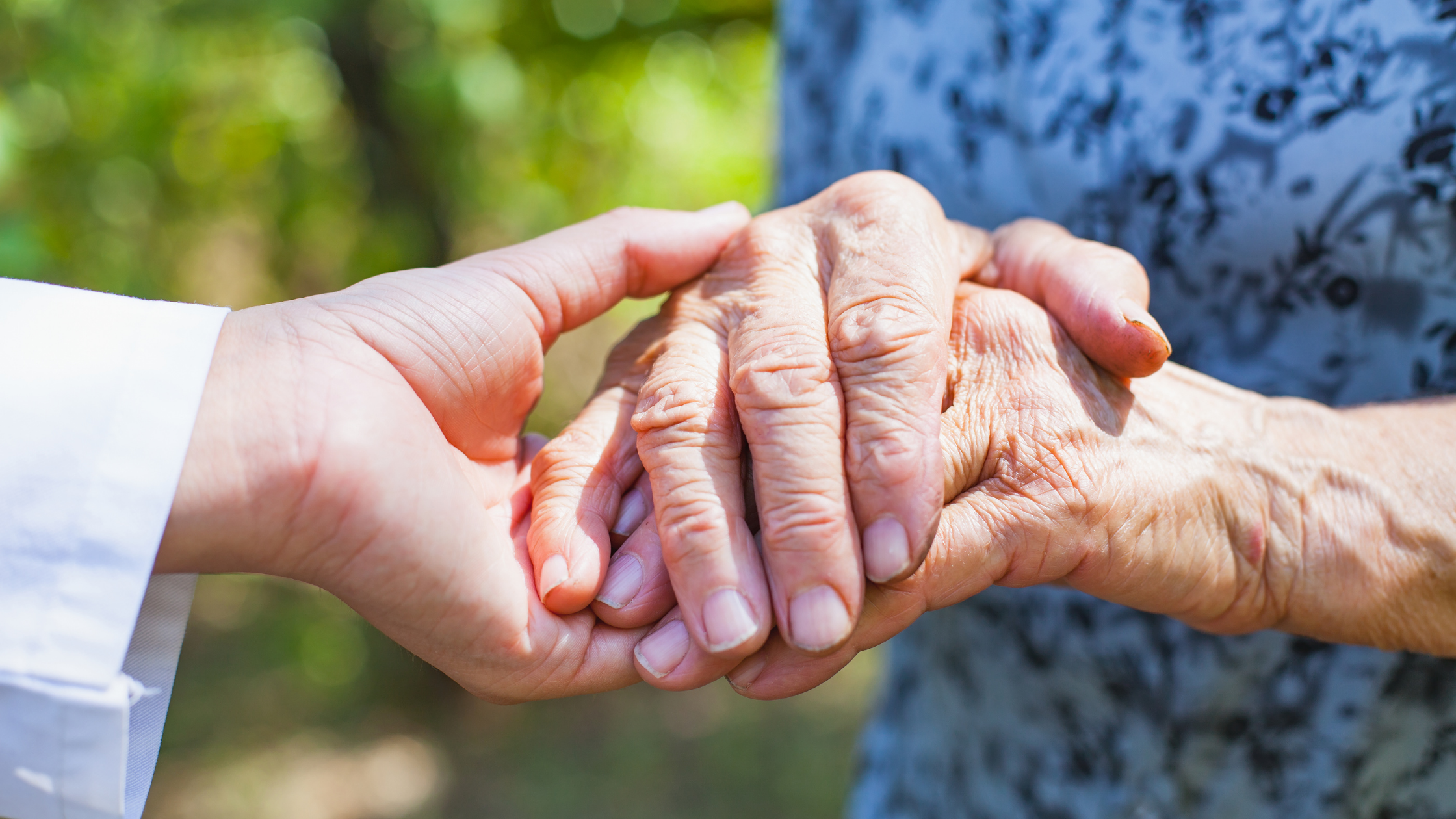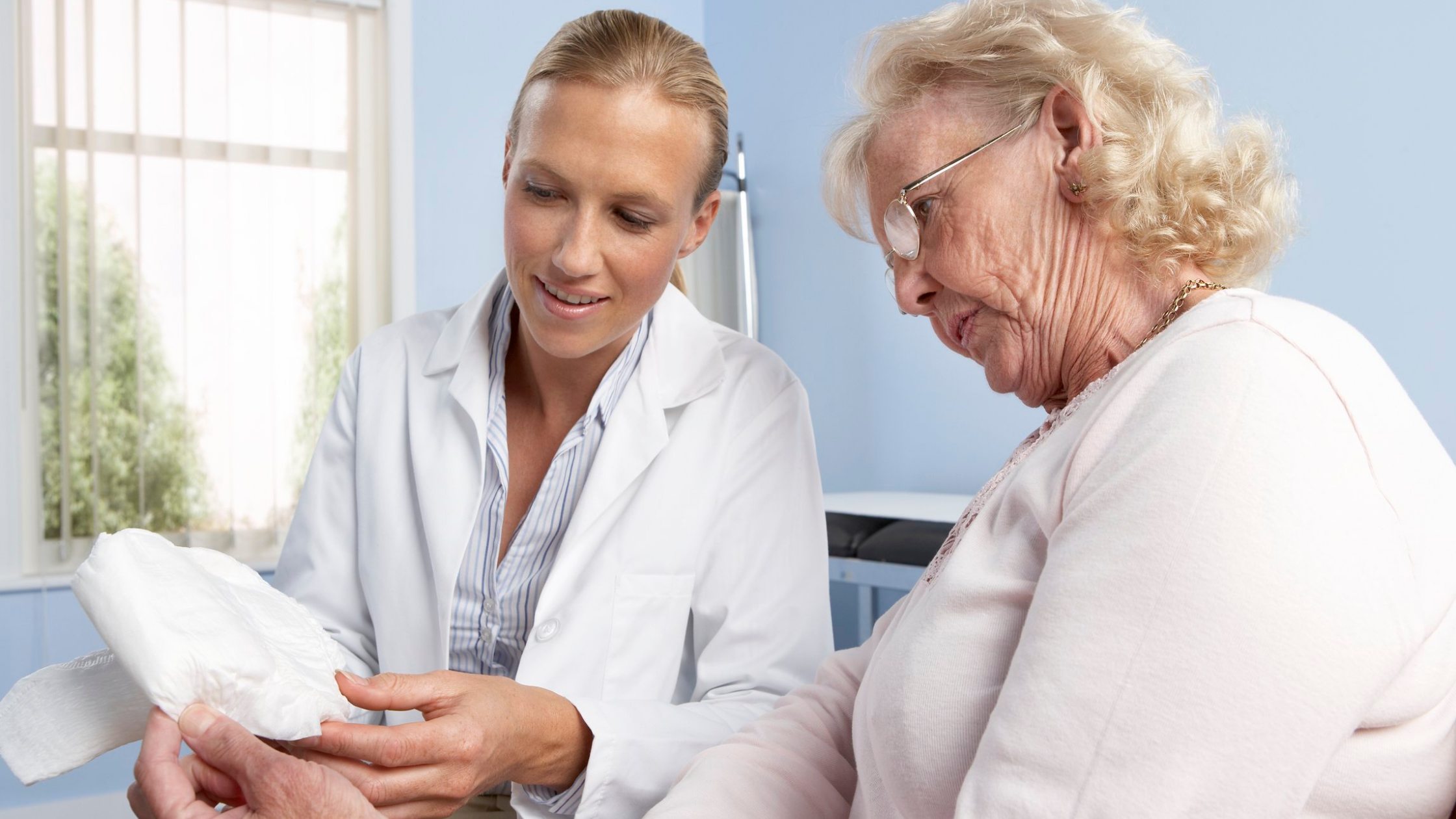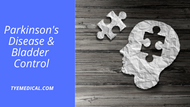How Parkinson’s Disease Affects Your Bladder Control
Written by TYE Medical on Apr 8th 2022
If you have Parkinson’s disease, it’s not uncommon for you to develop bladder control problems at some point. This can further complicate your life by disrupting your sleep and affecting your social life. It’s important to be aware of this common Parkinson’s symptom and understand how to recognize and manage it with appropriate treatments and useful products.
Parkinson’s disease carries a long list of possible symptoms often categorized as either motor or nonmotor. This is because it’s a disease of the nervous system and is considered a degenerative brain disorder originating from the basal ganglia. This part of your brain slowly loses proper function and decreases dopamine output. The end result is the impairment of many physical movements, mood, thinking, sleep, and automatic functions.
In short, Parkinson’s can affect almost every area of your life including your bladder control, which means understanding and preparation are critical.
Signs of Parkinson’s Disease
This condition is known for its three hallmark symptoms:
- Tremors
- Muscle stiffness
- Slow movement (bradykinesia)
But you’ll find a host of other symptoms that can appear depending on the stage of illness and what area of the brain is currently affected. This is why symptoms can vary widely between patients, but the progression of the disease is inevitable.
A Parkinson’s diagnosis is far from simple. It often takes years to arrive at a certain conclusion, because there is no single diagnostic test. It’s a matter of assessing progressive symptoms and ruling out similar illnesses.
Motor Symptoms

Motor symptoms are mild when they first appear, and you might only notice them on one side of your body. Usually, the condition progresses until both sides are affected.
Tremors
Even though these shaking movements are what come to mind when most people think of Parkinson’s, not everyone has this symptom. You typically notice tremors most when at rest. Sometimes it’s just one hand that trembles, but for others, you might also experience shaking in the face, chin, lips, or legs. It’s called “pill-rolling” when just the hands or fingers shake.
Muscle Stiffness
This rigidity symptom includes stiffness in the arms, legs, and torso.
Slow Movements (Bradykinesia)
This extremely common symptom makes all movements progressively slower which affects coordination and balance.
Other Motor Symptoms to Recognize
- Loss of automatic movements (affecting smiling, blinking, etc.)
- Difficulty taking the first step
- Decreased facial expressions
- Difficulty speaking (slurring words, soft voice)
- Drooling (difficulty swallowing)
- Uncontrolled acceleration (suddenly accelerated speech or movement)
- Loss of balance
Nonmotor Symptoms

These symptoms affect your mood, thinking ability, and senses.
Autonomic Dysfunction
Your autonomic nervous system controls your automatic bodily functions like blood pressure, heart rate, digestion, breathing, sweating, sexual arousal, and urination. This means you might experience incontinence, constipation, other bladder or bowel symptoms, low blood pressure when you stand, abnormal sweating, reduced interest in sexual activity.
Other Nonmotor Symptoms to Recognize
- Cognitive issues and dementia (memory, multitasking, thinking, judging distances)
- Hallucinations and psychosis (losing touch with reality)
- Sleep disorders
- Mood disorders (anxiety, depression, apathy)
- Daytime sleepiness
- Loss of sense of smell (one of the earliest symptoms)
- Pain (typically in areas where motor symptoms occur)
How Common Are Bladder Problems with Parkinson’s Disease?

Your risk of developing bladder symptoms or loss of bladder control increases as the disease progresses. According to most research, 30-40% of all Parkinson’s patients experience some type of urinary dysfunction.
The bladder’s two primary functions are to store urine and empty it, and Parkinson’s can affect your bladder in both ways. The most common bladder symptoms for Parkinson’s sufferers are:
- Frequent urination (the need to go often)
- Urgency (difficulty holding it)
This usually means the disease has affected your bladder nerves and they’re over signaling, telling your brain your bladder is full when it isn’t. This is often referred to as a “neurogenic bladder,” a condition associated with any disease that affects bladder nerves.
Nocturia (Nighttime Urination)
This is the most common bladder symptom for those with Parkinson’s Disease. When you experience nocturia, your bladder wakes you at night, signaling it’s full. You might awaken two or three times per night or even more often depending on the severity.
Urge Incontinence
This is also known as frequent urination (similar to nocturia but doesn’t only happen at night) and is the second most common bladder problem if you have Parkinson’s. The frequency can become extreme, requiring catheterization. With urge incontinence, you can’t wait to go to the bathroom, which can cause bladder leaks as you’re no longer able to hold back urine flow.
Incomplete Bladder Emptying
Since Parkinson’s can make it difficult for you to relax muscles (and your bladder is a muscular organ) you may not be able to relax the area enough to completely release urine. This means you’re not fully emptying your bladder when you urinate. When urine remains in the bladder too long, it can cause a urinary tract infection or bladder irritation. And since your bladder isn’t emptied, it will fill more quickly, sending you to the bathroom more often.
Overflow Incontinence
Sometimes, incomplete bladder emptying coupled with less sensitive (damaged) bladder nerves means you don’t realize your bladder is full. That is, you don’t realize it’s full until it overflows. This is referred to as overflow incontinence. At this point, you don’t have the ability to control your bladder or stop urine flow. Your bladder literally overflows with urine, which is a type of incontinence.
Functional Incontinence
When there is nothing physically wrong with bladder function, but you are unable to readily use the restroom on their own for other reasons, it is called functional incontinence. As motor symptoms progress, many people with Parkinson's experience diminished (or loss of) mobility and fine motor skills - which can make getting to the restroom and removing clothing on time difficult.
What Can You Do About Parkinson’s-Related Incontinence?

You can take several approaches, and which you choose will likely depend upon the stage of your illness.
- Lifestyle adaptations
- Medication
- Catheter
While you can’t cure incontinence due to Parkinson’s, you can take steps to avoid or improve incontinence symptoms.
Lifestyle Adaptions
Adjust Your Diet
The healthier your bladder is overall, the better you chance you have of minimizing frequency, urgency, and incontinence symptoms. A healthy diet that includes plenty of fiber and hydrating fluids is key. Be sure to avoid caffeine, alcohol, and carbonated beverages to also minimize bladder irritation.
Establish a Bathroom Routine
It’s best to preschedule bathroom times rather than being taken by surprise and risking bladder leaks. A routine can help you avoid accidents, but you’ll need to evaluate what bathroom schedule works best for you. Perhaps you go to the bathroom after every meal or snack, whether you feel the urge or not. You can also try eating and drinking at specific times each day to make your bathroom schedule more predictable.
Adjust Your Wardrobe
If you have urge incontinence, it helps to wear easily removable clothing with elastic waistbands and no zippers or buttons. This is especially true if you’re experiencing Parkinson’s common motor symptoms that impair mobility, dexterity, and balance.
Adapt Your Bathroom
You can make changes around your home and in your bathroom to help manage Parkinson’s-related incontinence. When motor skills are impaired, it’s helpful to have handrails, toilet frames, or adjustable height toilet seats to provide stability.
Use Incontinence Products
Familiarize yourself with the different types and styles of incontinence products. This can help you match your changing needs with the most beneficial resources.
- Incontinence pads are best for lighter leaks that often accompany urge incontinence.
- Incontinence underwear is most helpful for moderate to heavy leaks and if you are able to change your own products
- Incontinence briefs use tab-style front fasteners and are recommended for moderate to heavy leaks. They’re more convenient if you require some assistance with changes.
Find a complete list of products available from Tye Medical in our online store.
Medications
Some medications might help with overactive bladder, frequency, and urgency as related to Parkinson’s. These include oxybutynin, tolterodine, solifenacin, and darifenacin. However, these drugs can also worsen other Parkinson’s symptoms. You’ll also want to avoid these medications if you’re suffering from incomplete emptying or overflow incontinence because they’ll likely make those symptoms worse.
Laxatives can also improve incontinence symptoms, especially if you’re experiencing constipation due to Parkinson’s. Constipation in the bowel places pressure on the bladder, often worsening urgency and bladder leaks. Finding the right laxative for you can help alleviate both constipation and incontinence symptoms.
Indwelling Catheter (Suprapubic Catheter)
If you have long-term, severe incontinence, an indwelling catheter might be your best option for management. This would be most necessary in the later stages of Parkinson’s Disease. This type of catheterization involves inserting a fine tube into the urethra and up into the bladder. This tube is also attached to a drainage bag, allowing for the direct release of urine from the bladder. The catheter is replaced every few weeks.
LivDry Incontinence Products Delivered Discreetly with Free Shipping

As you navigate new and progressing symptoms, it can seem overwhelming. TYE Medical offers an easy way to evaluate, compare, and purchase the incontinence supplies you need.
You can shop our online store to compare products and take advantage of our Product Finder Tool to help make a personalized choice. If you have questions, our friendly customer service team is standing by to help.
You can also take advantage of discreet, free shipping on all orders!


